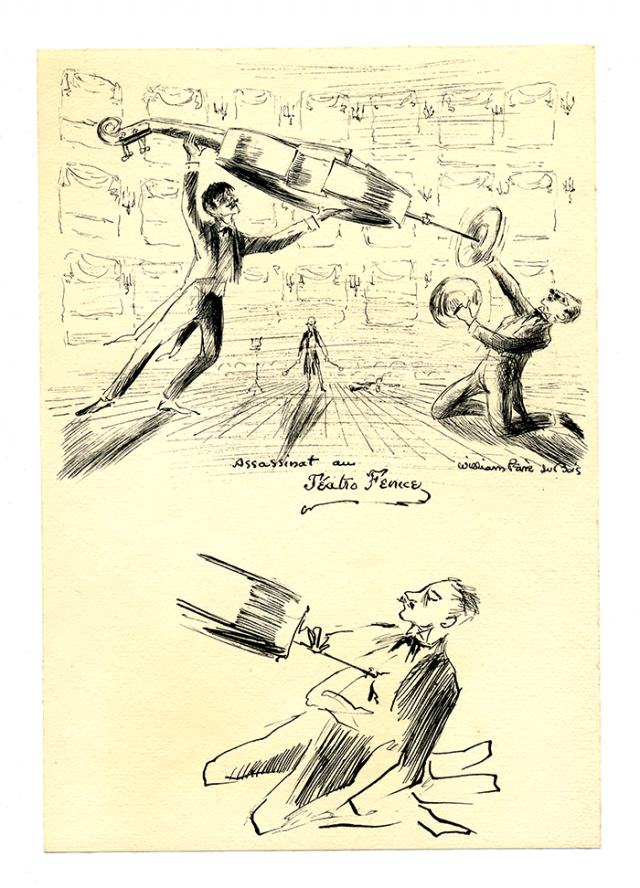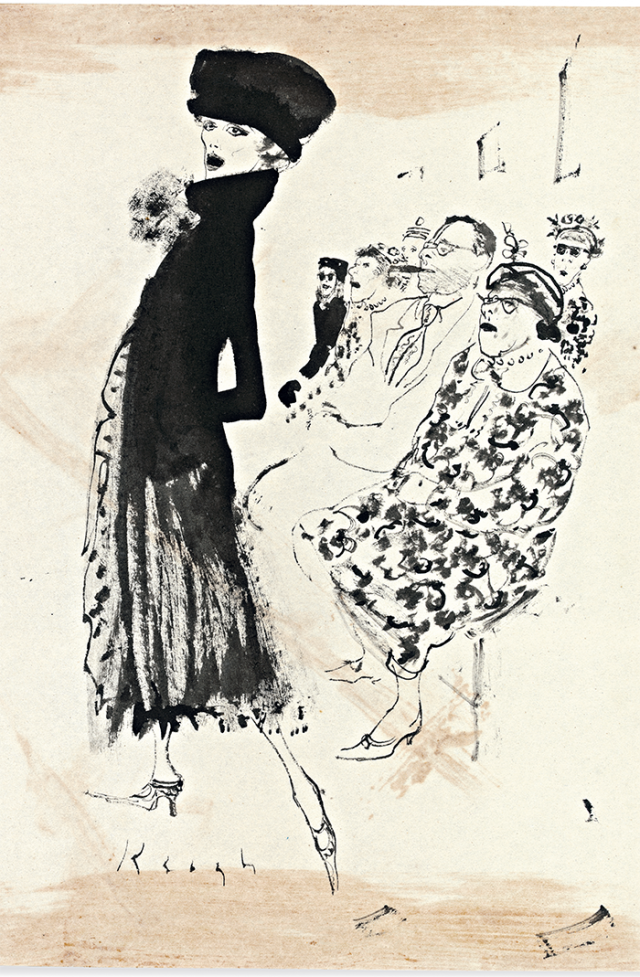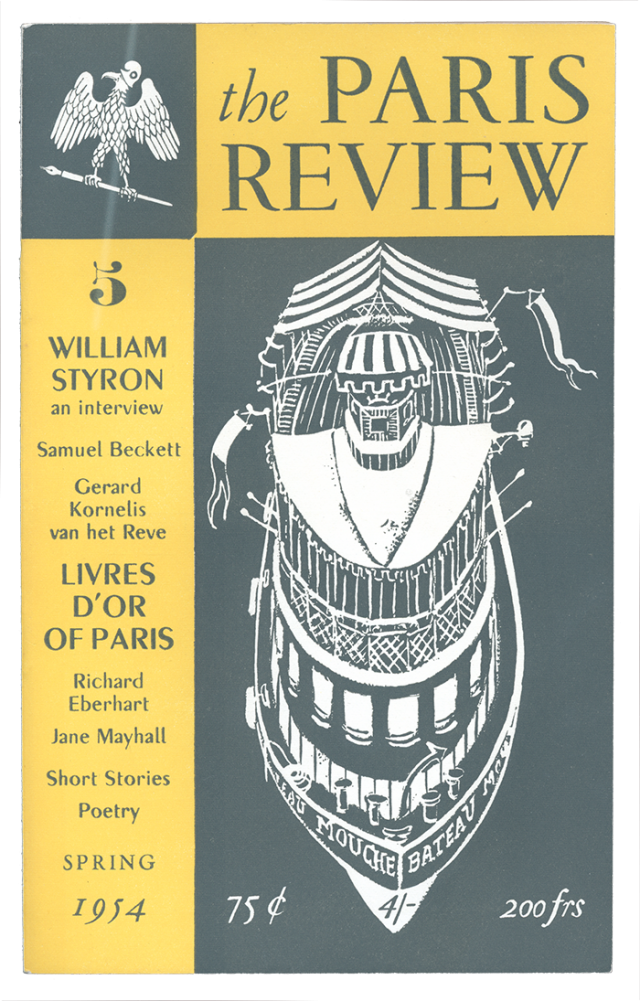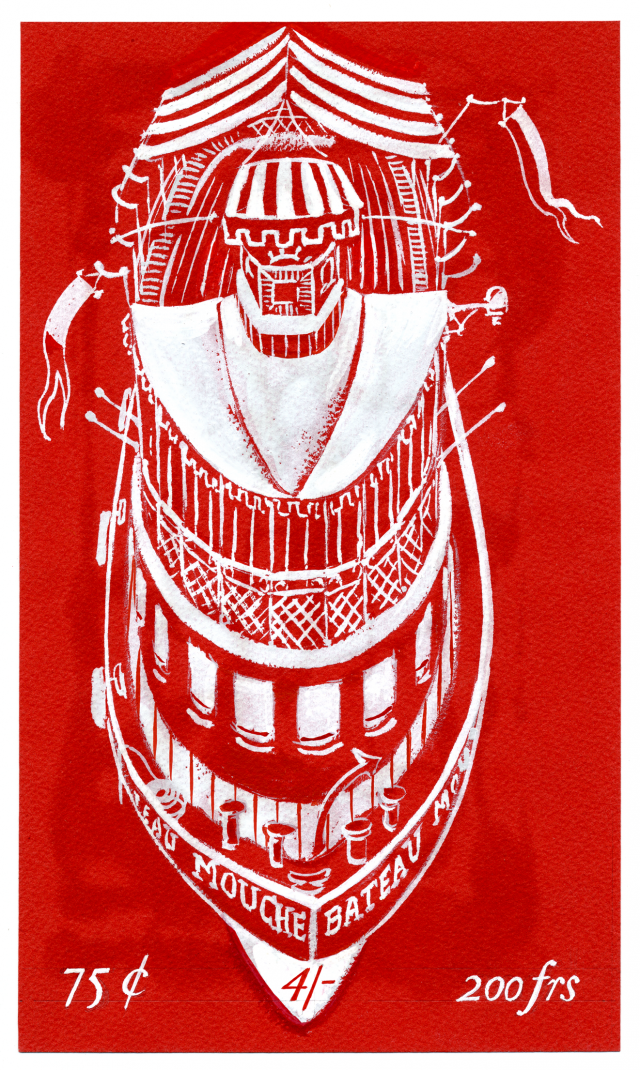Paris Review, Issue 204, Spring 2013
%20Keogh-Willa%20portrat.png) A drawing of Willa Kim from Tom Keogh's sketchbook.
A drawing of Willa Kim from Tom Keogh's sketchbook.
A native of Los Angeles, Willa Kim made her first trip to Europe in 1952, at the age of thirty-five. She traveled with a friend, the painter Margaret Stark. Paris was their first destination. “All the artists we admired were in Paris,” she recalls. “And everything French was worshipped on the West Coast.” Near the end of her trip, she was invited to a Thanksgiving dinner by the expatriate fashion illustrator Tom Keogh and his wife, Theodora. It was there she met William Pène du Bois, the first art director of the newly launched Paris Review, to which Tom had contributed several drawings of Paris life.
In truth, Willa had already been introduced to Pène du Bois, briefly: he had helped give her and Margaret a send-off when they made a trip to Spain. But that Thanksgiving, she says, was when she really met him. Billy showed her Paris and took her to a party celebrating the inaugural issue of the magazine. Of the first issue, Willa recalls, “Billy said all they [the editors] were doing was arguing with each other and they could never get anything published. He said that he finally got so sick of it that he just decided to have it printed—and he did! When he showed it at their next gathering, they were stunned. There it was—The Paris Review.”
Willa soon returned to New York, followed by Pène du Bois. They were married in 1955. Billy’s uncle Raoul Pène du Bois, a legendary art director and costumer, helped Willa gain a foothold in the world of New York theater and ballet. Over a half century—during which she made costumes for Glen Tetley, Mary Alice, Jack Lemmon, Birgit Keil, Evelyn Cisneros, and others—she garnered Tonys, Emmys, and an Obie, and was inducted into the Theater Hall of Fame in 2007.
Together, Willa and Billy maintained a trove of work from the early years of the Review and from their respective artistic careers. What follows here is a motley selection of art, photographs, and ephemera from their collection.
- Nicole Rudick
%20Keogh-Handlers.png) Paris scene by Tom Keogh.
Paris scene by Tom Keogh.
%20Single%20Calder%20Sketch.png) Costume rendering by Willa Kim for Under the Sun (1976), a ballet tribute to Alexander Calder's sculptures and mobiles.
Costume rendering by Willa Kim for Under the Sun (1976), a ballet tribute to Alexander Calder's sculptures and mobiles.
The costumes consisted of white leotards individually hand painted by Kim, a process she pioneered with this show. “We first did all the fittings on the dancer, marking the patterns on them, because you take a unitard or a pair of tights, and you don’t know where the knee is, you don’t know where the thighs are, you don’t know where the musculature is. Then I had the costume shop bring in mannequins and we put the tights and things on and painted in the colors. It was quite a revolution for choreographers to see this. They realized that there was something up there that they hadn’t seen before.”
%20Plimpton%202.png) Plimpton as a premier danseur. Collage by William Pène du Bois and Richard Marshall, who served as the Review’s art editor from 1978 to 1993.
Plimpton as a premier danseur. Collage by William Pène du Bois and Richard Marshall, who served as the Review’s art editor from 1978 to 1993.
%20Tattoo3.png) Paris Review tattoo, courtesy of William Pène Dubois and Richard Marshall.
Paris Review tattoo, courtesy of William Pène Dubois and Richard Marshall.
%20Keogh-To%20Billy.png) A lithograph for William Pène Dubois and his first wife, Jane, by Tom Keogh in 1952
A lithograph for William Pène Dubois and his first wife, Jane, by Tom Keogh in 1952
%20Costume%20Drawing%203.png) Costume renderings by Willa Kim for The Old Glory (1964), a play by Robert Lowell.
Costume renderings by Willa Kim for The Old Glory (1964), a play by Robert Lowell.
 Unidentified caricature by William Pène Dubois.
Unidentified caricature by William Pène Dubois.
%20Costume%20Drawing%202.png) Costume rendering by Willa Kim for Under the Sun (1976), a ballet tribute to Alexander Calder's sculptures and mobiles.
Costume rendering by Willa Kim for Under the Sun (1976), a ballet tribute to Alexander Calder's sculptures and mobiles.
 Assassinat au Téatro Fenice by William Pène du Bois.
Assassinat au Téatro Fenice by William Pène du Bois.
%20Keogh-HonkyTonk.png) Album cover (notional?) by Tom Keogh.
Album cover (notional?) by Tom Keogh.
%20Plimpton%201.png) Plimpton and James Cagney. Collage by William Pène du Bois and Richard Marshall.
Plimpton and James Cagney. Collage by William Pène du Bois and Richard Marshall.
 Paris scene by Tom Keogh.
Paris scene by Tom Keogh.
%20Keogh-prostitute.png) Paris scene by Tom Keogh.
Paris scene by Tom Keogh.
%20Tattoo%201.png) Paris Review tattoo, courtesy of William Pène Dubois and Richard Marshall.
Paris Review tattoo, courtesy of William Pène Dubois and Richard Marshall.

 William Pène du Bois’s painting of a bateau mouche for the cover of issue 5.
William Pène du Bois’s painting of a bateau mouche for the cover of issue 5.